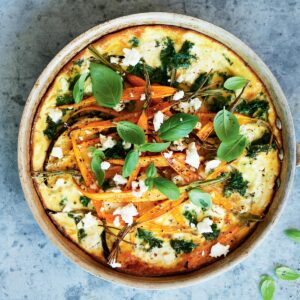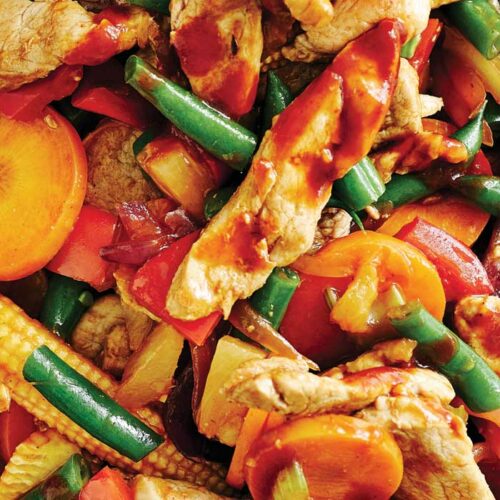
Cooking carbohydrate-rich pasta ahead, then reheating it to eat could be a way to satisfy your carb cravings and gain the benefit of a healthy fibre boost.
It’s a common reaction to eating starchy carbohydrates – that energy spike, followed by a slump that leaves us hunting for something else to eat and, ultimately, can lead to weight gain. This is because foods such as white pasta, rice and potatoes have a high glycaemic index (GI): our body processes and stores them as simple sugars, causing our blood glucose levels to rise rapidly. In fact, glucose from cooked starchy foods is absorbed almost as quickly as glucose from a sugary drink. But recent research shows how a simple kitchen technique (and a little patience) can even out the after effect of eating carbs.
What is the Glycaemic Index and why does it matter for carbs?
The Glycaemic Index (GI) measures the impact carbohydrate-containing foods have on our blood sugar levels. It shows how quickly each food affects your blood sugar level when eaten alone.
Low-GI foods, such as lentils or beans, cause a slow steady rise in blood sugar levels, but high-GI foods, such as white bread or pasta, cause rapid peaks.
Pasta put to the test
The research, lead by Dr Denise Robertson, senior nutritionist at the University of Surrey, measured the blood sugar levels of 10 participants after eating a bowl of pasta over three days. The meal was served a different way each time: hot and freshly cooked on day one; chilled on day two; chilled and reheated on day three. The blood sugar levels of the participants were measured every 15 minutes for two hours after eating the pasta.
As predicted, the hot bowl of pasta showed the biggest rise in blood sugar levels. The chilled pasta resulted in a slightly lower rise. The surprising result was the reheated pasta reduced the rise in blood sugar by 50 per cent.
The science of making carbs healthier
So why is this? The complex structure, which makes up raw, starchy foods, is broken down when cooked in water. When cooled, however, the structure of the foods re-organises itself and becomes a resistant starch, which isn’t as easily broken down by our gut and, according to Diabetes UK, ‘essentially becomes a fibre’. Finding out exactly why the reheating process has an influence over carbohydrates is currently the subject of more detailed research currently being funded by Diabetes UK.
Converting a carb-loaded meal into a fibre-rich dish
This new discovery could be used to ‘simply and easily improve health,’ says Dr Chris van Tulleken of the BBC’s Trust Me I’m A Doctor, who was involved with the study. ‘We can convert a carb-loaded meal into a more healthy fibre-loaded one without changing a single ingredient.’
That’s not to say reheating carbs gives us free reign to indulge in as many starchy foods as we like. ‘We’ve never said that food with more resistant starch is lower in calories, because it’s not,’ warns Dr Robertson. ‘There will be a small calorie difference because you’re getting less glucose, but it’s not a huge amount, so it’s not going to cure obesity.’ But the findings do have potential to help those with pre- and type 2 diabetes, allowing easier control of blood sugar levels. And for the rest of us, any simple tweak to keep our fibre intake up and our bellies satisfied is surely worth a go…
Here are a couple of cooled pasta salads to get you started:
Article sources and references
- Robertson, Tracey AU et al. Making simple changes to the way a starchy carbohydrate meal is prepared can significantly reduce the postprandial glucose response VL - 77 DO - 10.1017/S0029665118001726 JO - Proceedings of the Nutrition Society ERhttps://www.researchgate.net/publication/328098508_Making_simple_changes_to_the_way_a_starchy_carbohydrate_meal_is_prepared_can_significantly_reduce_the_postprandial_glucose_response
www.healthyfood.com










